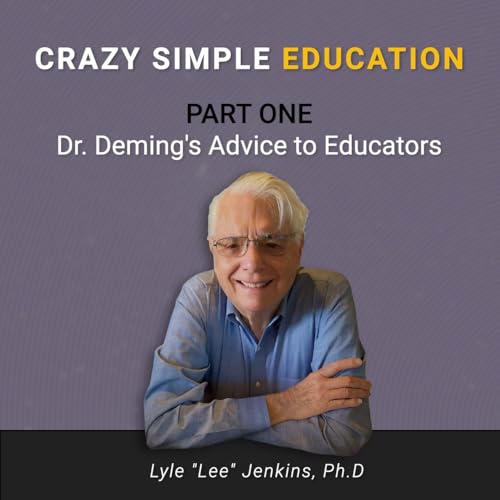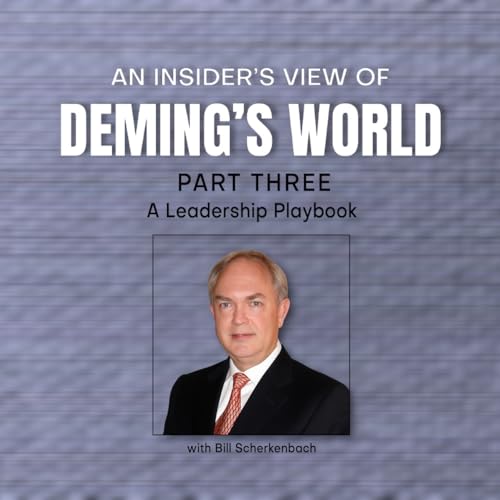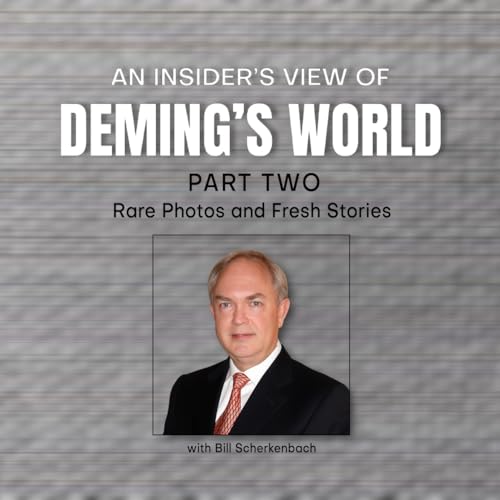What was it like to learn from Dr. Deming himself -- a decade before his name became legend in U.S. business circles? In this deeply personal episode, William Scherkenbach shares with host Andrew Stotz what it was like to sit in Deming's classroom in 1972, join him for late-night chats at the Cosmos Club, and help ignite transformational change at Ford and GM. Learn how Deming's teachings shaped a lifetime of purpose, and why Scherkenbach, now in his 80th year, is stepping back into the arena with lessons still burning bright. TRANSCRIPT 0:00:02.3 Andrew Stotz: My name is Andrew Stotz, and I'll be your host as we continue our journey into the teachings of Dr. W. Edwards Deming. Today, I'm here with featured guest William Scherkenbach, and he is known as one of the men who has spent a huge amount of time with Dr. Deming, as he mentioned to me previously, starting from 1972, over a thousand meetings and many other activities that he's been involved in. So, Bill, welcome to the show. Why don't you give us a little background about you? 0:00:39.5 William Scherkenbach: Oh, okay. Good to be here, Andrew. Well, I'm going to start with, since it's about Deming, in '72, I was newly married in April, but had been accepted to NYU Graduate School of Business, and I don't know, I never found out who wrote the course syllabus, but whoever did wrote something that it sounded like a darn interesting course, sampling, manufacturing. I was a protocol officer at the United Nations at the time and was going to night school at the New York University Graduate School of Business. So, I said, this sounds like a good course, interesting course. Had no idea who Dr. Deming was, and I walked into the first class, and there was an old, I'm 26, so he was 72 in 1972, and he was one of the first, one of the only old person who didn't say, I used to be, and I don't want to stereotype all of my peers now that I'm 79, but hopefully I don't fall into the, well, I used to be and what happened. But he did tell, I mean, statistics can be a very technical subject, and the way he taught it, I had courses in some theory of sampling, which was one of his books. 0:02:52.2 William Scherkenbach: He had three, I said three courses. The other course that I took was based on his lectures in Japan in 1950, and in fact, two of them. The third course was an extension of that. So, he was, he would teach the statistics, but he was able to tell the history of the people behind all of the thoughts and the formulas and approaches, and I found that extremely, extremely interesting. And he handed out tons of papers and material, and it was just a very, very good experience. I know he had, and he had, in my opinion, a great sense of humor, but then statisticians, what's our status? Yeah, we're like accountants, in any event. . 0:04:12.2 Andrew Stotz: Why was he teaching? I mean, at 72, most men, you know, maybe women also, but most of us are like, it's the twilight of our years, and we now know he had 30 more years to go, but why was he teaching? And also, what's interesting is when I think about Deming, I think about his overall system of what he's teaching, whereas it's interesting to think about how he taught one relatively narrow subject. 0:04:43.7 William Scherkenbach: I'll get to that as to why I think he was teaching. But yeah, back then there were no 14 Points, no glimmer of Profound Knowledge. It was, not theoretical statistics, but applied statistics with a theory behind it. And he still was really expanding on Shewhart 's work with the difference between enumerative and analytic. He used his own. Now, why he was teaching, years later, probably 1987, so yeah, a bunch of years later, when I was at Ford and I had attended at the time, I attended a senior executive week-long get-together in order to get constancy of purpose or more continuity in the senior executive group. One of the people we brought in was Dr. Peter Kastenbaum. And I found as I attended his lecture in that week-long meeting, he was a student of CI Lewis. And CI Lewis, Deming learned about from Walter Shewhart and his work in the epistemology theory of knowledge. And in any event, Deming, when he was asked, and at the time it was still in the '30s, I think, when he was at the School of Agriculture, or the agriculture department, and bringing in Shewhart, he had tried to get CI Lewis to come talk. And CI said, I would love to, but I have a commitment to my students. And so I can't adjust my schedule. 0:07:33.9 William Scherkenbach: And the students, the people who wanted to learn were sacred. And I think that had a huge impact on Dr. Deming. I mean, he spoke about it a lot. And the way, you know, in a lot of the videos that Clare Crawford-Mason did, lovingly called the old curmudgeon. But for students, he had the greatest empathy and charity for, he just didn't suffer fools gladly. If you showed him that you weren't willing to learn, he took great joy in letting them...
Más
Menos
 43 m
43 m 52 m
52 m Sep 15 202538 m
Sep 15 202538 m Aug 19 20251 h y 14 m
Aug 19 20251 h y 14 m 1 h y 10 m
1 h y 10 m 1 h y 23 m
1 h y 23 m 24 m
24 m 29 m
29 m

